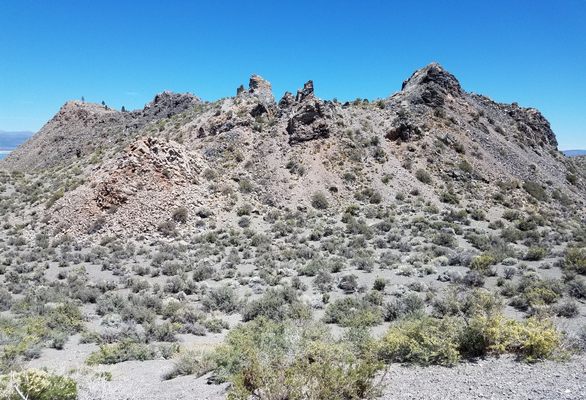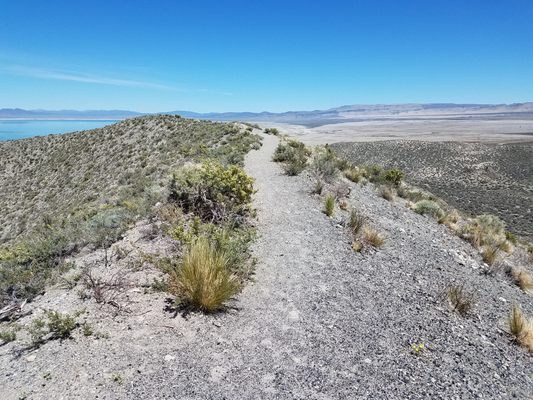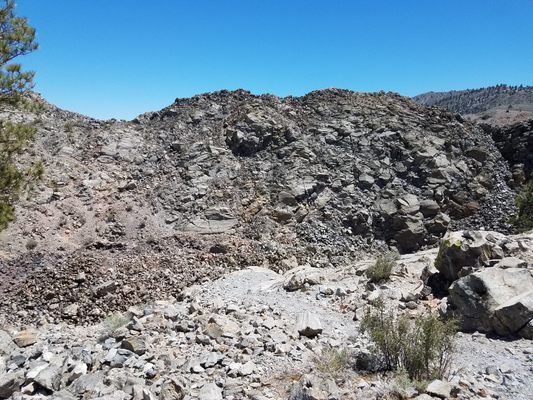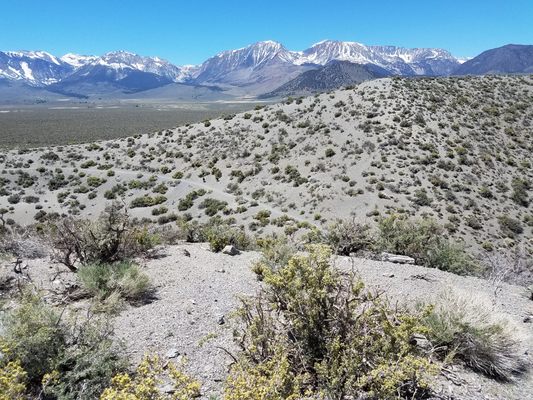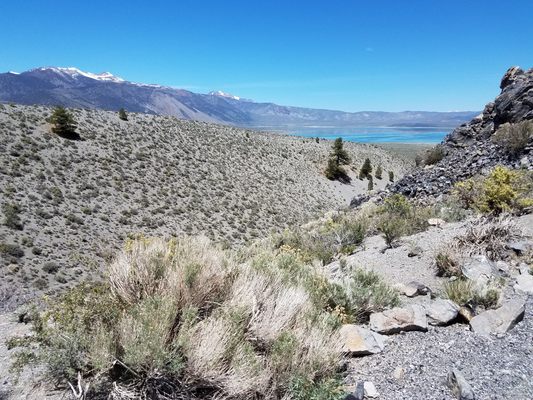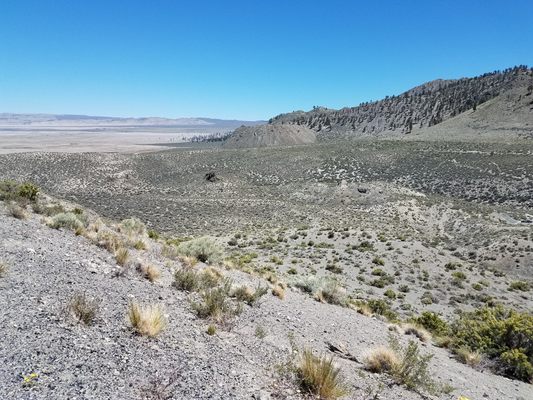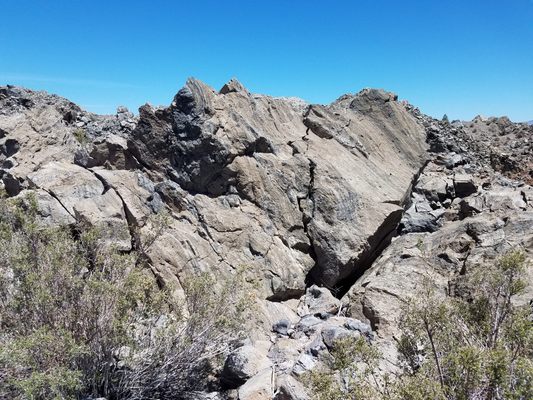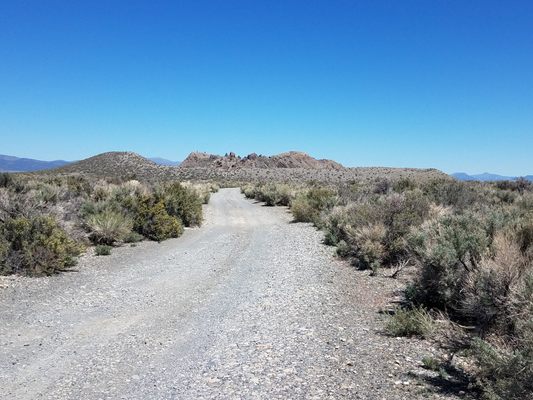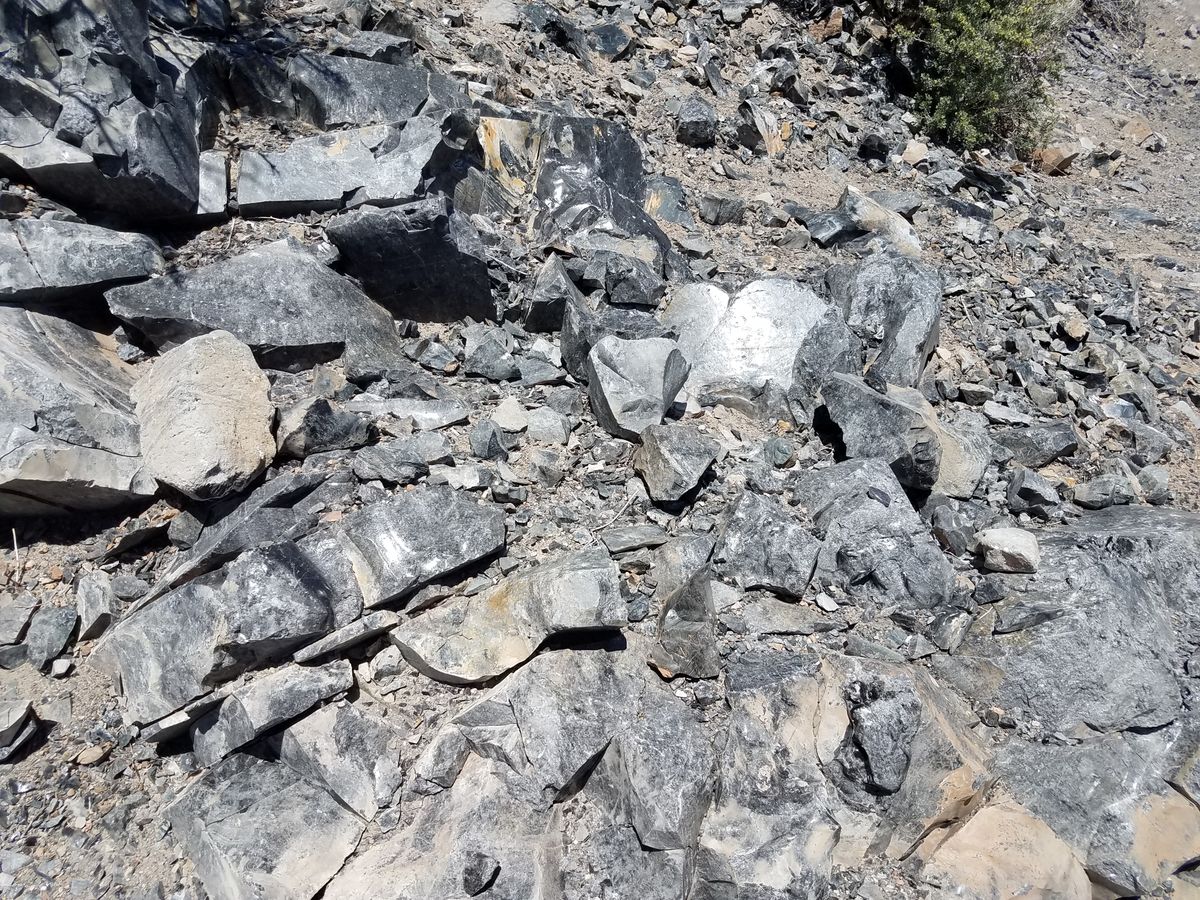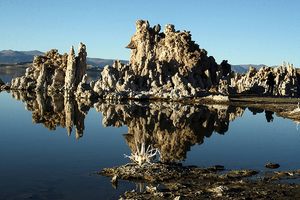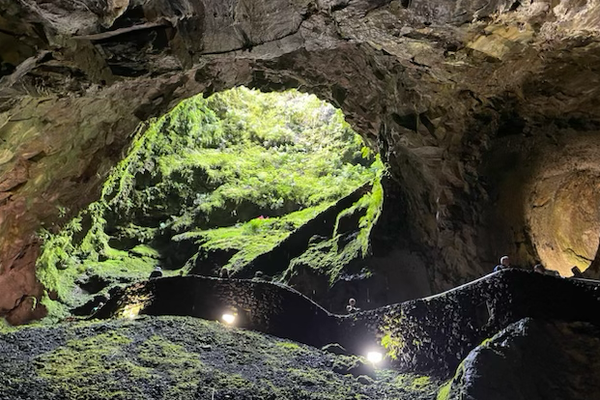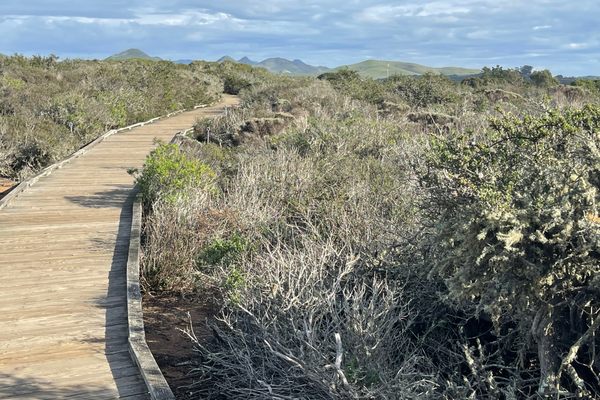About
Panum Crater, just south of Mono Lake, is the youngest and northernmost of the Inyo-Mono Domes (or Craters). These are a distinctive set of small domelike volcanoes nearly all consisting of rhyolite, lava with a high silica (silicon dioxide) content. Molten rhyolite has a consistency like toothpaste, and because of this high viscosity, it tends to form glass when it's cooled quickly. Nearly all obsidians have a rhyolite composition.
The eruption starts with a fountain of ash ("tephra,") of which some falls out in a ring around the vent while the rest is dispersed. Later rhyolite magma is extruded. Since it's so viscous, it doesn't flow far but builds up in the center of the vent to form a dome. The rhyolite also typically forms massive obsidian around the edges because it cools more quickly there. This can be seen at the dome in Panum Crater.
Uniquely, Panum Crater is so geologically young that the tephra ring is preserved. Being just loose material, it erodes away geologically quickly, and no rings are left around the older domes.
Related Tags
Know Before You Go
Go about three miles east of US-395 on CA State Route 120. The crater will be obvious on the north (left). Turn left at the signed turnoff and proceed a little less than a mile on a graded road.
The road tends to be rough but should be passable with care to ordinary passenger cars in dry weather. The road goes to a trailhead with an interpretive kiosk. The trail heads to the crest of the tephra ring, from which trails can be taken either way around the ring. A branch trail also heads to the dome itself, and you can climb up into it. Please stay on established trails in the loose material.
Published
June 8, 2022
